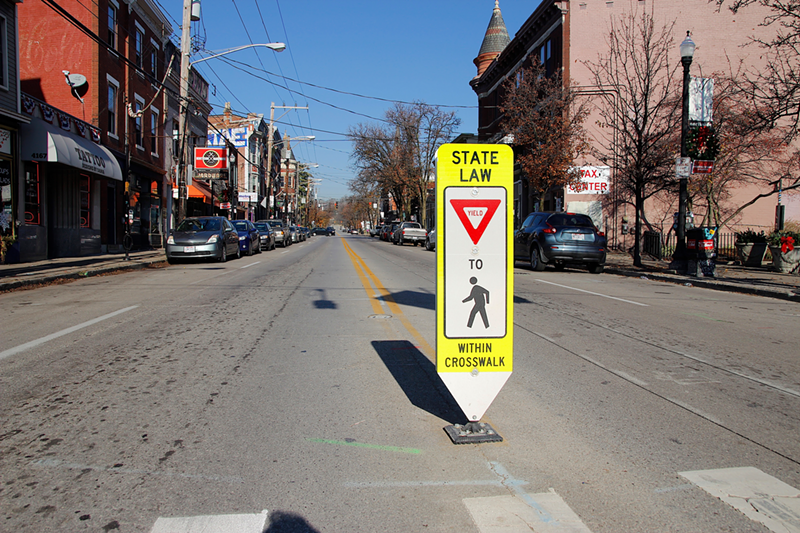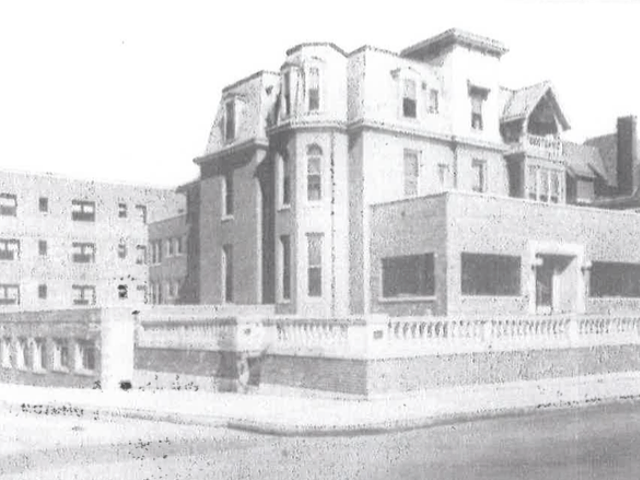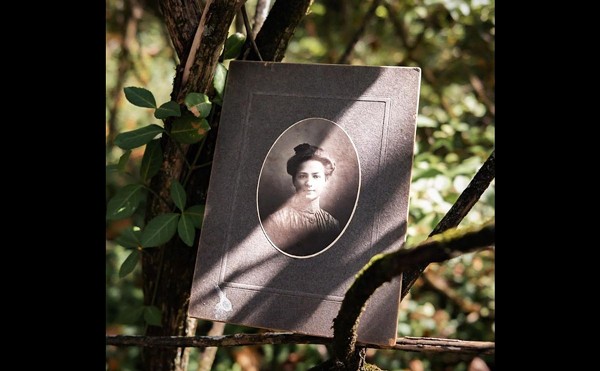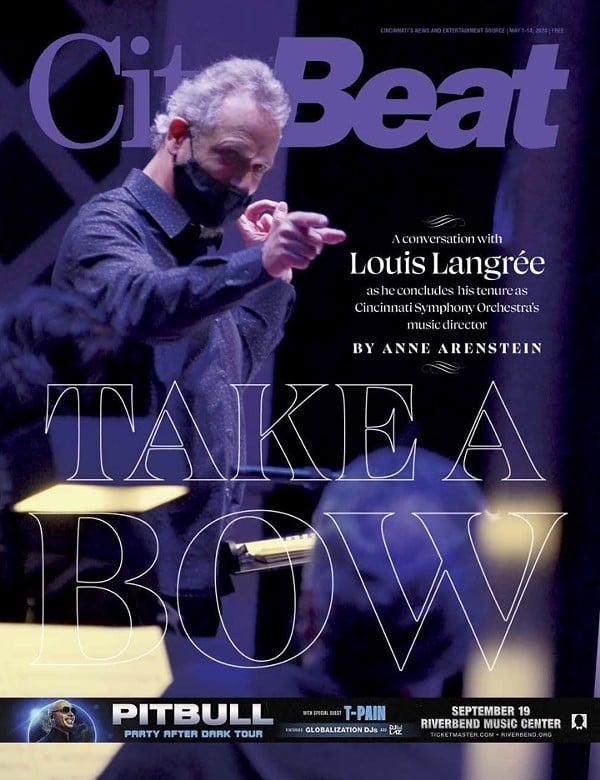In the wake of a number of tragic injuries and deaths involving pedestrians hit by cars in Cincinnati in the past few years, city officials are working to find ways to make walking safer in the Queen City.
One — announced yesterday by Cincinnati City Council member Greg Landsman — includes legislation that asks city administration to report on moving the city toward a way of approaching traffic safety called "Vision Zero."
Landsman's proposed legislation has a number of other components, including requesting reports on the feasibility of naming a point person within the Cincinnati Police Department responsible specifically for pedestrian safety and a report on purchasing handheld cameras for the department that could capture speeders' information and generate citations automatically.
Perhaps the biggest — and broadest — piece Landsman would like the city to look into is Vision Zero.
Vision Zero isn't just a policy or set of policies, its adherents say. Instead, according to advocates, it's a whole different way of thinking about traffic in which fatalities from automobile-related incidents are entirely avoidable. Vision Zero calls for municipalities to set concrete, data-driven action plans with finite timelines to reach zero traffic fatalities.
The concept originated in Sweden in the late 1990s, and has since been adopted by New York City, San Diego, Austin and other municipalities. In the two years since the concept was implemented in that last city, traffic deaths have declined by 25 percent — despite Austin's massive population growth. The city has resolved to eliminate all traffic-related deaths by 2025.
The proposal comes as an increasing focus is being placed on pedestrian safety. The issue is reaching a critical state, officials say — something advocates for better walkability and pedestrian safety have been saying for years.
Cars struck more than 425 pedestrians last year in Cincinnati, including more than 40 in December alone. That year-long total is almost twice as many incidents as the number recorded five years ago.
Seven people died in those pedestrian-automobile incidents last year, including 15-year-old Western Hills High School freshman Gabby Rodriguez, who was struck and killed September 10 when she was sideswiped by a Dodge Journey on four-lane Harrison Avenue as she ran for her bus. As she struggled to get up, a white Honda Civic hit her again. The driver of the Dodge stopped. The Honda did not, and authorities are still searching for the driver. Rodriguez succumbed to her injuries at Cincinnati Children’s Hospital later that day.
“September 10, 6:40 a.m. was the worst phone call I’ve ever gotten,” Eduardo Rodriguez, Gabby’s father, told Council Jan. 7. “And then to see her in the back of the ambulance, there was my daughter like a fish out of the water. It’s the drivers. We tend to be in a hurry. One minute late, two minutes late. We don’t think about the outcomes. We have to pay attention, especially when we’re driving on busy roads with a lot of kids around.”
The incident that killed Rodriguez was just one of 13 traffic accidents involving Cincinnati Public School students making their way to school since the beginning of the school year, CPS Superintendent Laura Mitchell told council today. Three other students were involved in separate late December accidents as they walked to schools on the West Side. One, Kenya Austin, was walking across an intersection when a car struck her, breaking her femur. The two others also involved students in crosswalks; in one case, a Cincinnati Police cruiser was just feet away.
Rodriguez's death was one of a number that have garnered attention over the past few years. Others included the Nov. 26, 2016 death of 3-year-old Khloe Pitts, who died after a car hit her and sped away as her family left the Festival of Lights at the Cincinnati Zoo in Avondale, and the death the next month of Sarah Cole, a popular Northside business owner who was struck and killed by a car on Hamilton Avenue. Cole and Pitts were among seven pedestrians who died after cars hit them that year. Another seven died the next year.
After Cole's death, efforts to make busy areas around Northside safer abounded. Most recently, the city's Department of Transportation and Engineering made parking in the curb lanes on Hamilton Avenue 24 hours. Last year, during the pilot phase of that change, crashes there decreased by 40 percent over the year prior, and rush-hour crashes decreased by nearly 70 percent. That's probably due to the fact traffic was reduced from four lanes to two, slowing traffic through the busy neighborhood business district. The parking arrangement is now permanent.
Landsman has called for other changes, including making a busy Northside intersection at Chase and Florida avenues a four-way stop.
In Northside and elsewhere, the Cincinnati Police Department temporarily stepped up traffic enforcement in some hot spots last year. That enforcement comes after media reports showed that the number of traffic citations written by Cincinnati police dropped 60 percent between 2009 and 2016.
Despite those efforts, fatalities have continued.
One of the most recent fatal incidents: the Dec. 30 death of 2-year-old Dameon Turner as his parents walked him in a stroller on the Hopple Street Viaduct. An impaired driver in a pickup truck hopped the curb, striking and killing Turner. Hamilton County Prosecutor Joe Deters Jan. 8 announced a grand jury had indicted the suspected driver, Satwinder Singh, on aggravated vehicular homicide, aggravated vehicular assault and other charges. Singh, who is suspected of being intoxicated on multiple drugs when he was driving, faces 14 years in prison.
That's led to more intense efforts to buckle down on keeping pedestrians safe, as well as some debate about what that entails and who is responsible — drivers, pedestrians, officials or all of the above — for curbing traffic deaths involving people who are walking.
Officials from the city’s Department of Transportation and Engineering, the Southwest Ohio Regional Transit Authority’s Metro bus service and Cincinnati Public Schools Jan. 7 outlined potential measures to address pedestrian-involved accidents around Western Hills and Dater High Schools — where a number of recent accidents involving students have happened — specifically.
John Brazina and Dennis Lechlak of DOTE said the department is considering or has already implemented specific improvements to the area in order to improve pedestrian safety. Those include:
• Updating streetlights along Ferguson Road to brighter LED lights.
• Replacing missing in-street paddles reminding drivers to proceed slowly at crosswalks.
• A potential crosswalk and crossing lights at Glenway Avenue and Sydney Road. That could take three to six months and cost about $15,000.
• Working with CPS to potentially change school drop-off and pickup locations and patterns.
• The possible installation of rapid flashing beacon at crosswalks.
• Reviewing the configuration of Ferguson Road and Ferguson Place. The timeframe for this step could take a year or more. One possibility: the intersection could become a four-way stop.
• A potential school zone along Ferguson Road, which would include new signage and flashing lights. That could cost between $8,000 to $10,000.
• Traffic calming measures along Ferguson Road. Those could take six months to study and more than a year to implement.
Along with those improvements, DOTE officials said educating students about the hazards of traffic needed to be a priority.
“Pedestrians have to be educated on how to use these crosswalks," Lechlak told council.
That drew a response from CPS Superintendent Mitchell.
“Our first and No. 1 priority is that our children need to be safe,” she told council. “I do agree that our students need to be educated. But we’re finding that even when our students are educated, sometimes they’re hit. I think the bigger issue is really around driver safety. How can drivers across the city be more cognizant of pedestrians? It goes beyond, quite honestly, just educating our students. We need more active support as it pertains to (crossing guards) and as it pertains to educating drivers.”
Mitchell said the city should help increase the number of crossing guards working for the district. CPS currently pays about $750,000 a year for 94 crossing guards across the district. Three more crossing guards joined the complement around Dater and Western Hills High this month.
Landsman also pushed back at the idea that pedestrians should drive efforts to prevent future traffic tragedies.
"There's still a mentality within DOTE that isn't helpful," Landsman said at council's Jan. 9 meeting. "It's not that people don't care, it's the idea that our streets are about getting people from A to B as quickly as possible. That viewpoint needs to change."
Metro, which carries a number of students to school each day, also promised changes to help improve safety. At Western Hills High and Dater, that includes changing bus stop patterns so that students are always dropped off on the side of the street their school is on, reducing the need to cross busy roads, Metro CEO Darryl Haley told council. Metro bus drivers have also been told not to stop their buses across crosswalks.
In the longer term, it remains to be seen what the city will do about increasing rates of pedestrian injuries and fatalities — something that has been a national trend in recent years. Almost 6,000 pedestrians died in traffic accidents in 2017, according to data from the Governors Highway Safety Association. A decade ago, that number was fewer than 4,000.
While it remains to be seen whether there is enough political will for a comprehensive solution like Vision Zero, elected officials have pledged to do more to push the city toward a time when traffic deaths don't happen.
“People have to watch out for children, for adults, for high school kids, in crosswalks,” Council member Amy Murray said during the Jan. 7 council committee meeting. “We need to make sure people are safe where they’re crossing, but we also need to ask people at home, please make sure you’re not texting and driving, make sure you’re driving the speed limit and if you see a school bus or a Metro bus, be aware because we don’t want this to happen again.”
Landsman says it will take a sweeping effort to end traffic fatalities.
“This is about keeping children and families safe, and right now, we have a ton of work to do,” he tweeted announcing his push for Vision Zero Jan. 7.






